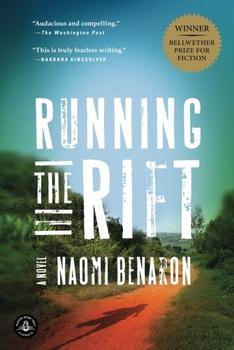Summary | Excerpt | Reading Guide | Reviews | Beyond the Book | Read-Alikes | Genres & Themes | Author Bio

Critics' Opinion:
Readers' Opinion:
First Published:
Jan 2012, 384 pages
Paperback:
Oct 2012, 400 pages
 Book Reviewed by:
Book Reviewed by:
Poornima Apte
Buy This Book
This article relates to Running the Rift
While the Hutu and Tutsi clans have been in Rwanda for centuries, it was after the Belgian colonialists took over the country in 1916 that categorizations into Hutu and Tutsi were made more explicit through the use of ethnic identity cards. The minority Tutsi were largely favored for government jobs early on in the colonial government and decades of resentment simmered until things went completely haywire in April 1994.
 It was then that the President of Rwanda, Juvénal Habyarimana, was killed in a suspicious plane accident along with the president of neighboring Burundi, Cyprien Ntaryamira. The Tutsis were immediately blamed and in a campaign of sustained genocide, over 800,000 Tutsi and Hutu moderates were killed in just 100 days.
It was then that the President of Rwanda, Juvénal Habyarimana, was killed in a suspicious plane accident along with the president of neighboring Burundi, Cyprien Ntaryamira. The Tutsis were immediately blamed and in a campaign of sustained genocide, over 800,000 Tutsi and Hutu moderates were killed in just 100 days.
The international community's apathy to these killings was almost as shocking. Even as thousands of Tutsis were being slaughtered, the U.N. Peacekeeping forces (UNAMIR - United Nations Assistance Mission in Rwanda) stood silently by without intervening - insisting they were following orders to only "monitor" the situation and little else.
While the mass murders were taking place, 10 Belgian peacekeeping soldiers were killed, which lead to the removal of many U.N. troops at precisely the time when they should have been increased to play a more active role.

The United States showed an extreme reluctance to intercede. An earlier ambush of U.S. army rangers in Somalia in 1993 left a permanent scar in the American psyche and made interventions for peacekeeping a shaky endeavor for years after.
At U.N. meetings, time and time again, the word "genocide" was not used even if the mass killings met all the legal definitions of genocide. Using the term genocide would have meant that the U.N. had to intervene and prevent and punish perpetrators.
Further exacerbating the situation, President Clinton signed a Presidential Decision Directive, which limited U.S. military involvement in peacekeeping operations. Toward the end of the killings, some U.N. forces finally arrived but the action was too late to be of much consequence.
Years later, President Clinton apologized on behalf of the international community and accepted that more could have been done early on to prevent the tragedy of such huge proportions. "We did not immediately call these crimes by their rightful name: genocide," he said.
Even for those who think they know the history of Rwanda reasonably well, Running the Rift provides a far more extensive and nuanced description of the conflict than any number of news articles.
To learn more about the history of Rwandan conflict, read BookBrowse's feature on Paul Rusesabagina's book, An Ordinary Man, or study the PBS timeline that delineates the chronology of events in Rwanda in the 1990s. You can also visit www.rwanda-genocide.org to hear first-hand accounts of the Rwandan conflict from witnesses and survivors.
Image of Rwandan ex-President Juvenal Habyarimana
![]() This "beyond the book article" relates to Running the Rift. It originally ran in January 2012 and has been updated for the
October 2012 paperback edition.
Go to magazine.
This "beyond the book article" relates to Running the Rift. It originally ran in January 2012 and has been updated for the
October 2012 paperback edition.
Go to magazine.





The Funeral Cryer by Wenyan Lu
Debut novelist Wenyan Lu brings us this witty yet profound story about one woman's midlife reawakening in contemporary rural China.
Your guide toexceptional books
BookBrowse seeks out and recommends the best in contemporary fiction and nonfiction—books that not only engage and entertain but also deepen our understanding of ourselves and the world around us.